Growing up in Morningside, Minnesota, a village sandwiched between St. Louis Park and Minneapolis (annexed by Edina in 1966), Bruce Brothers always loved sports, but he did not consider himself athletic. Getting hooked on baseball when his grandfather took him to see the Minneapolis Millers play at Metropolitan Stadium, Bruce, born in 1946, admits he “became pretty good at spectating.” One of his first summer jobs was as an usher at Twins’ games.
The youngest of two sons of a father in sales and a mother who worked as a bookkeeper, Bruce did venture into sports his senior year at Edina-Morningside High School in 1963, running barefoot on the cross country team when races were a modest 1.8 miles. The 6’ 1” student fell in love with the sport which led to a lifetime passion and was proud to earn a varsity letter. Bruce also was a sportswriter for the high school newspaper and vividly remembers a trip to a hockey game. “I talked legendary coach Willard Ikola into taking me on the team bus to cover a game between the Hornets [Edina] and Eveleth, where Ikola grew up. It was then as I walked into the Eveleth Hippodrome and encountered eight-foot-tall posters of Ikola and other local hockey legends that I realized I was in the company of greatness.”
While taking journalism classes at the University of Minnesota (U of M), Bruce got married and was expecting a baby when he left college in 1967 to accept a job as the sports editor of the International Falls Daily Journal based on a recommendation of John Gilbert, a compatriot at the Minnesota Daily then working as a sportswriter in Duluth. Covering all sports, Bruce learned on the fly and grew in the profession where he learned to accept challenges, focus, and be flexible and calm amid the chaos of deadlines and distractions. Two years later, Bruce was covering all sports at the Duluth News-Tribune. Gaining growth and experience, Bruce eventually landed at the Minneapolis Tribune for 13 years and another 20 years across the river at the St. Paul Pioneer Press.
Along the way, Bruce covered memorable events such as the U of M’s 2003 national men’s hockey championship, the 2004 and 2005 U of M women’s hockey national titles, the 1991 Stanley Cup Final at Met Center, Minnesota Wild wing Marion Gaborik scoring 5 goals in a 2007 NHL game (the only time it occurred in the decade from 2000-10), and the Twin Cities and Grandma’s Marathon races. He interviewed many sports celebrities whom he found gracious: Jesse Owens, Harmon Killebrew, Mickey Mantle, many notable hockey figures, the recently deceased soccer star Pelé, Evel Knievel, George Mikan, and Olympian runners Frank Shorter, Garry Bjorklund, Bill Rodgers, Janis Klecker, Lorraine Moller, and Ron Daws. It is Daws, a 1968 marathon Olympian from Minneapolis, who Bruce singles out as a friend, mentor, and coach. “I introduced myself to him at Grandma’s Marathon one year, and not long after he agreed to outline a training program for me that helped me qualify for a spot in the Boston Marathon. He enabled me to recognize that most obstacles we face are self-constructed. Ron walked the talk, which is something we all need to do.”
Bruce qualified for the 1982 Boston Marathon, the famous “Duel in the Sun” race to the finish line with a separation of a mere two seconds between winner Alberto Salazar and runner-up Dick Beardsley (then of Excelsior, Minnesota). Finishing about 18 minutes ahead of Bruce was Jack Moran (3:09:37), one of the unsung heroes of the running community that Bruce has most appreciated. “I truly enjoyed meeting the people behind the scenes such as Jeff Winter, Jack Moran, Scott Keenan, Fred Lebow, and Virginia Brophy Achman, all people in charge of running events who had much more to think about than a sportswriter’s questions.”
Passion for the sport of running is evident in Bruce’s own activity, an estimated 35 marathons with a best time of 2:49:15 and 30-40 ultramarathons, in addition to his professional life. “After I began running marathons, I spent most of a year talking the Tribune [Minneapolis] into allowing me to write a running column. Eventually I also produced a running column for the Pioneer Press that happily evolved from a news-and-notes piece to a philosophical meditation that seemed to appeal to many.”
Running has continued to be a way of life for Bruce in retirement. “It becomes a magical place to be. Time and distance become irrelevant,” he says of long distance running. He cites the Voyager 50-Mile Trail Ultramarathon founded in 1982 from Carlton, Minnesota to Duluth and back as a favorite running memory.
Today the father of three children, Steve, Lori Perpich, and Brian, lives in Minneapolis with his partner Denise Dohrmann and cat, Charlie. His home running course is Lake Nokomis, the Minnehaha Parkway, or the river roads.
Summarizing his 76 years of life, Bruce states, “I have few regrets; my life has been blessed with incredible journeys, experiences, and acquaintances. Every time I’ve fallen—and some were big ones—I’ve managed to figure out how to get back up. My glass has almost always been half full. What could be better than that?”
Interested in reading about other people who have contributed to Minnesota's rich heritage of sports? Please visit the free website www.mnathletes.com for other articles on runners and media members such as Mary Lahammer, Robb Leer, and Stew Thornley.
Bruce Brothers: SPORTSWRITER AND MARATHONER SEES GLASS ALMOST ALWAYS HALF-FULL; WHAT COULD BE BETTER THAN THAT?
Growing up in Morningside, Minnesota, a village sandwiched between St. Louis Park and Minneapolis (annexed by Edina in 1966), Bruce Brothers always loved sports, but he did not consider himself athletic. Getting hooked on baseball when his grandfather took him to see the Minneapolis Millers play at Metropolitan Stadium, Bruce, born in 1946, admits he “became pretty good at spectating.” One of his first summer jobs was as an usher at Twins’ games.
The youngest of two sons of a father in sales and a mother who worked as a bookkeeper, Bruce did venture into sports his senior year at Edina-Morningside High School in 1963, running barefoot on the cross country team when races were a modest 1.8 miles. The 6’ 1” student fell in love with the sport which led to a lifetime passion and was proud to earn a varsity letter. Bruce also was a sportswriter for the high school newspaper and vividly remembers a trip to a hockey game. “I talked legendary coach Willard Ikola into taking me on the team bus to cover a game between the Hornets [Edina] and Eveleth, where Ikola grew up. It was then as I walked into the Eveleth Hippodrome and encountered eight-foot-tall posters of Ikola and other local hockey legends that I realized I was in the company of greatness.”
While taking journalism classes at the University of Minnesota (U of M), Bruce got married and was expecting a baby when he left college in 1967 to accept a job as the sports editor of the International Falls Daily Journal based on a recommendation of John Gilbert, a compatriot at the Minnesota Daily then working as a sportswriter in Duluth. Covering all sports, Bruce learned on the fly and grew in the profession where he learned to accept challenges, focus, and be flexible and calm amid the chaos of deadlines and distractions. Two years later, Bruce was covering all sports at the Duluth News-Tribune. Gaining growth and experience, Bruce eventually landed at the Minneapolis Tribune for 13 years and another 20 years across the river at the St. Paul Pioneer Press.
Along the way, Bruce covered memorable events such as the U of M’s 2003 national men’s hockey championship, the 2004 and 2005 U of M women’s hockey national titles, the 1991 Stanley Cup Final at Met Center, Minnesota Wild wing Marion Gaborik scoring 5 goals in a 2007 NHL game (the only time it occurred in the decade from 2000-10), and the Twin Cities and Grandma’s Marathon races. He interviewed many sports celebrities whom he found gracious: Jesse Owens, Harmon Killebrew, Mickey Mantle, many notable hockey figures, the recently deceased soccer star Pelé, Evel Knievel, George Mikan, and Olympian runners Frank Shorter, Garry Bjorklund, Bill Rodgers, Janis Klecker, Lorraine Moller, and Ron Daws. It is Daws, a 1968 marathon Olympian from Minneapolis, who Bruce singles out as a friend, mentor, and coach. “I introduced myself to him at Grandma’s Marathon one year, and not long after he agreed to outline a training program for me that helped me qualify for a spot in the Boston Marathon. He enabled me to recognize that most obstacles we face are self-constructed. Ron walked the talk, which is something we all need to do.”
Bruce qualified for the 1982 Boston Marathon, the famous “Duel in the Sun” race to the finish line with a separation of a mere two seconds between winner Alberto Salazar and runner-up Dick Beardsley (then of Excelsior, Minnesota). Finishing about 18 minutes ahead of Bruce was Jack Moran (3:09:37), one of the unsung heroes of the running community that Bruce has most appreciated. “I truly enjoyed meeting the people behind the scenes such as Jeff Winter, Jack Moran, Scott Keenan, Fred Lebow, and Virginia Brophy Achman, all people in charge of running events who had much more to think about than a sportswriter’s questions.”
Passion for the sport of running is evident in Bruce’s own activity, an estimated 35 marathons with a best time of 2:49:15 and 30-40 ultramarathons, in addition to his professional life. “After I began running marathons, I spent most of a year talking the Tribune [Minneapolis] into allowing me to write a running column. Eventually I also produced a running column for the Pioneer Press that happily evolved from a news-and-notes piece to a philosophical meditation that seemed to appeal to many.”
Running has continued to be a way of life for Bruce in retirement. “It becomes a magical place to be. Time and distance become irrelevant,” he says of long distance running. He cites the Voyager 50-Mile Trail Ultramarathon founded in 1982 from Carlton, Minnesota to Duluth and back as a favorite running memory.
Today the father of three children, Steve, Lori Perpich, and Brian, lives in Minneapolis with his partner Denise Dohrmann and cat, Charlie. His home running course is Lake Nokomis, the Minnehaha Parkway, or the river roads.
Summarizing his 76 years of life, Bruce states, “I have few regrets; my life has been blessed with incredible journeys, experiences, and acquaintances. Every time I’ve fallen—and some were big ones—I’ve managed to figure out how to get back up. My glass has almost always been half full. What could be better than that?”
Growing up in Morningside, Minnesota, a village sandwiched between St. Louis Park and Minneapolis (annexed by Edina in 1966), Bruce Brothers always loved sports, but he did not consider himself athletic. Getting hooked on baseball when his grandfather took him to see the Minneapolis Millers play at Metropolitan Stadium, Bruce, born in 1946, admits he “became pretty good at spectating.” One of his first summer jobs was as an usher at Twins’ games.
The youngest of two sons of a father in sales and a mother who worked as a bookkeeper, Bruce did venture into sports his senior year at Edina-Morningside High School in 1963, running barefoot on the cross country team when races were a modest 1.8 miles. The 6’ 1” student fell in love with the sport which led to a lifetime passion and was proud to earn a varsity letter. Bruce also was a sportswriter for the high school newspaper and vividly remembers a trip to a hockey game. “I talked legendary coach Willard Ikola into taking me on the team bus to cover a game between the Hornets [Edina] and Eveleth, where Ikola grew up. It was then as I walked into the Eveleth Hippodrome and encountered eight-foot-tall posters of Ikola and other local hockey legends that I realized I was in the company of greatness.”
While taking journalism classes at the University of Minnesota (U of M), Bruce got married and was expecting a baby when he left college in 1967 to accept a job as the sports editor of the International Falls Daily Journal based on a recommendation of John Gilbert, a compatriot at the Minnesota Daily then working as a sportswriter in Duluth. Covering all sports, Bruce learned on the fly and grew in the profession where he learned to accept challenges, focus, and be flexible and calm amid the chaos of deadlines and distractions. Two years later, Bruce was covering all sports at the Duluth News-Tribune. Gaining growth and experience, Bruce eventually landed at the Minneapolis Tribune for 13 years and another 20 years across the river at the St. Paul Pioneer Press.
Along the way, Bruce covered memorable events such as the U of M’s 2003 national men’s hockey championship, the 2004 and 2005 U of M women’s hockey national titles, the 1991 Stanley Cup Final at Met Center, Minnesota Wild wing Marion Gaborik scoring 5 goals in a 2007 NHL game (the only time it occurred in the decade from 2000-10), and the Twin Cities and Grandma’s Marathon races. He interviewed many sports celebrities whom he found gracious: Jesse Owens, Harmon Killebrew, Mickey Mantle, many notable hockey figures, the recently deceased soccer star Pelé, Evel Knievel, George Mikan, and Olympian runners Frank Shorter, Garry Bjorklund, Bill Rodgers, Janis Klecker, Lorraine Moller, and Ron Daws. It is Daws, a 1968 marathon Olympian from Minneapolis, who Bruce singles out as a friend, mentor, and coach. “I introduced myself to him at Grandma’s Marathon one year, and not long after he agreed to outline a training program for me that helped me qualify for a spot in the Boston Marathon. He enabled me to recognize that most obstacles we face are self-constructed. Ron walked the talk, which is something we all need to do.”
Bruce qualified for the 1982 Boston Marathon, the famous “Duel in the Sun” race to the finish line with a separation of a mere two seconds between winner Alberto Salazar and runner-up Dick Beardsley (then of Excelsior, Minnesota). Finishing about 18 minutes ahead of Bruce was Jack Moran (3:09:37), one of the unsung heroes of the running community that Bruce has most appreciated. “I truly enjoyed meeting the people behind the scenes such as Jeff Winter, Jack Moran, Scott Keenan, Fred Lebow, and Virginia Brophy Achman, all people in charge of running events who had much more to think about than a sportswriter’s questions.”
Passion for the sport of running is evident in Bruce’s own activity, an estimated 35 marathons with a best time of 2:49:15 and 30-40 ultramarathons, in addition to his professional life. “After I began running marathons, I spent most of a year talking the Tribune [Minneapolis] into allowing me to write a running column. Eventually I also produced a running column for the Pioneer Press that happily evolved from a news-and-notes piece to a philosophical meditation that seemed to appeal to many.”
Running has continued to be a way of life for Bruce in retirement. “It becomes a magical place to be. Time and distance become irrelevant,” he says of long distance running. He cites the Voyager 50-Mile Trail Ultramarathon founded in 1982 from Carlton, Minnesota to Duluth and back as a favorite running memory.
Today the father of three children, Steve, Lori Perpich, and Brian, lives in Minneapolis with his partner Denise Dohrmann and cat, Charlie. His home running course is Lake Nokomis, the Minnehaha Parkway, or the river roads.
Summarizing his 76 years of life, Bruce states, “I have few regrets; my life has been blessed with incredible journeys, experiences, and acquaintances. Every time I’ve fallen—and some were big ones—I’ve managed to figure out how to get back up. My glass has almost always been half full. What could be better than that?”
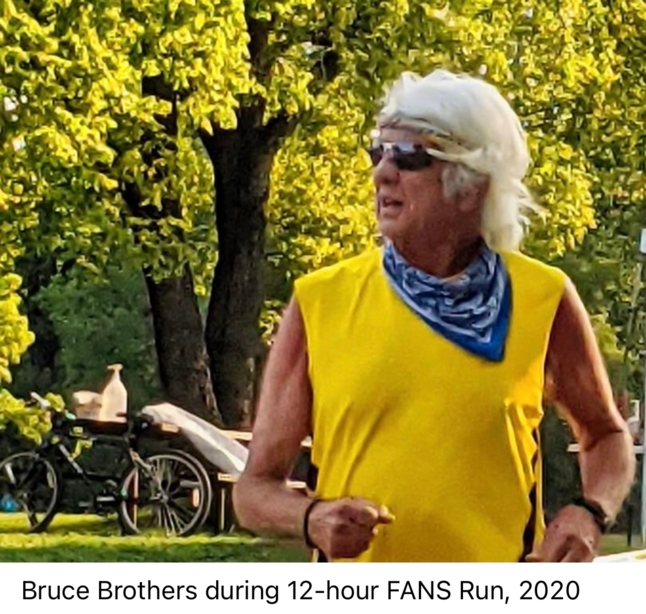
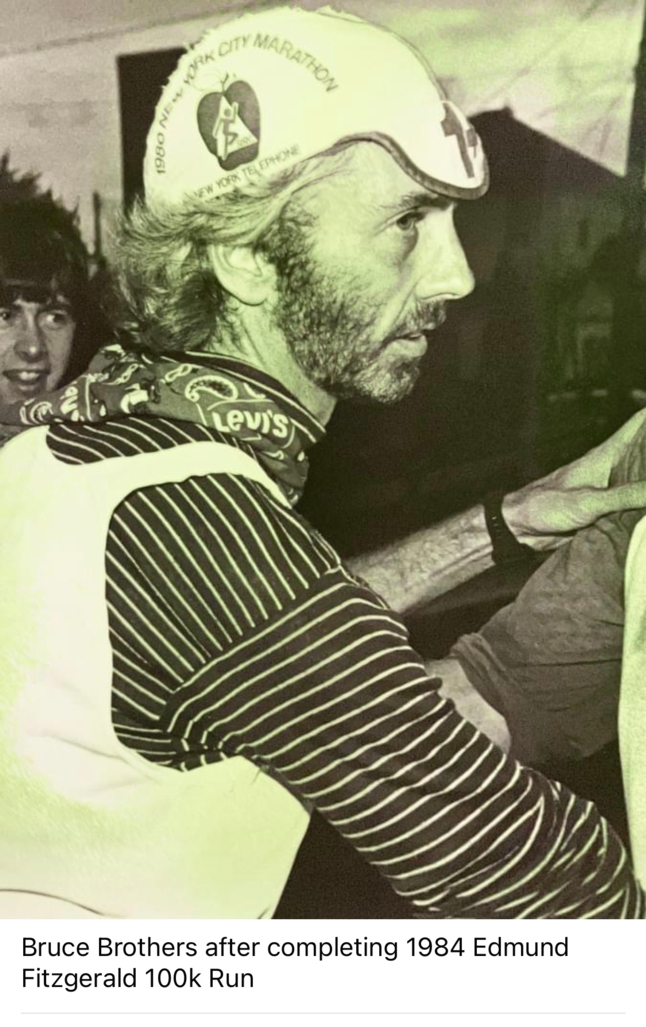
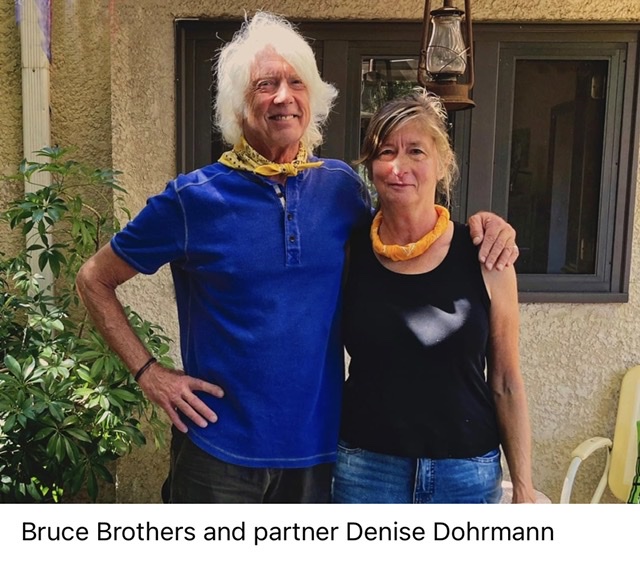
Interested in reading about other people who have contributed to Minnesota's rich heritage of sports? Please visit the free website www.mnathletes.com for other articles on runners and media members such as Mary Lahammer, Robb Leer





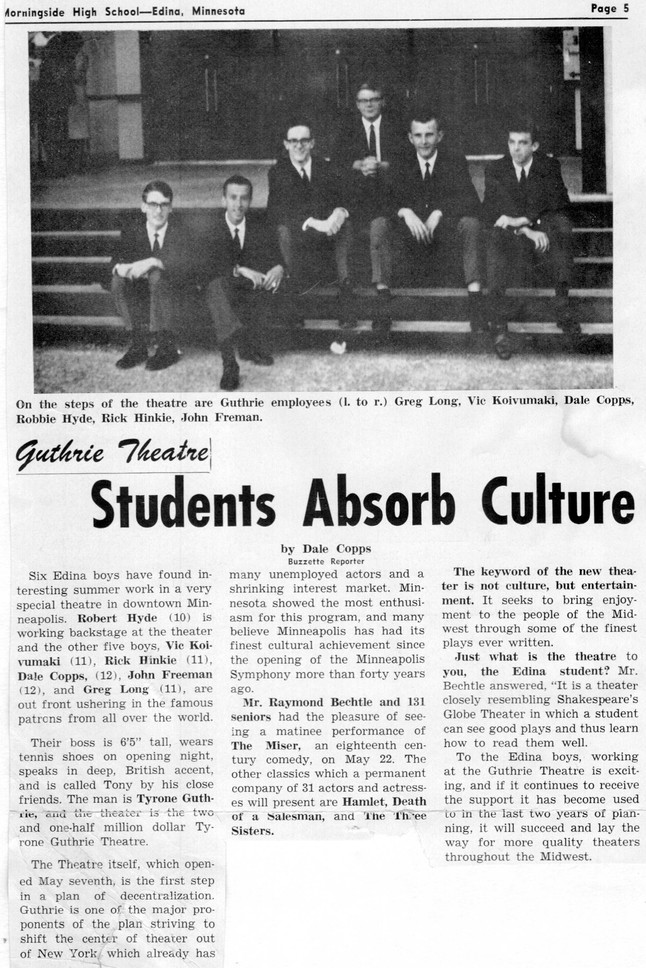
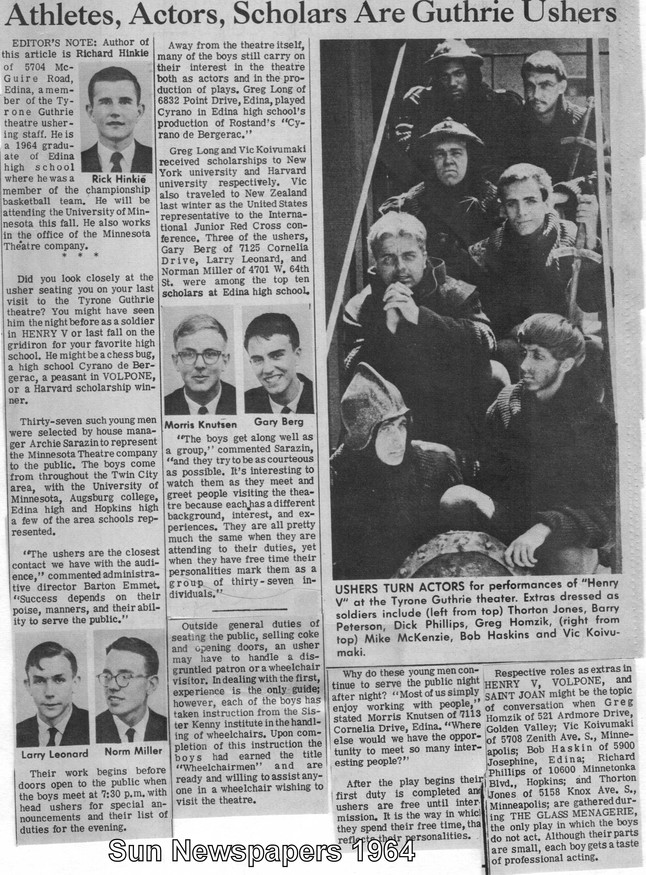
.jpg)